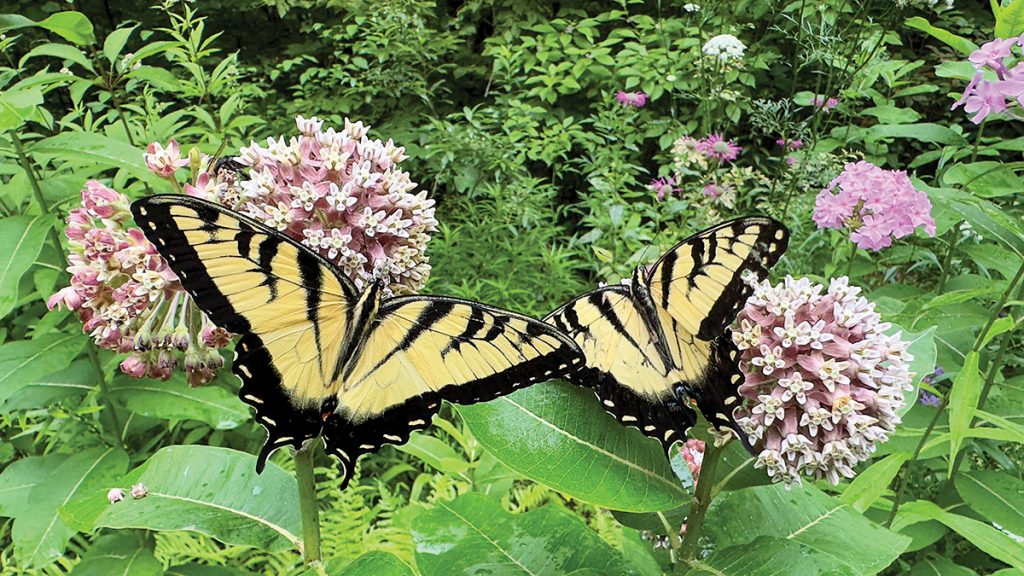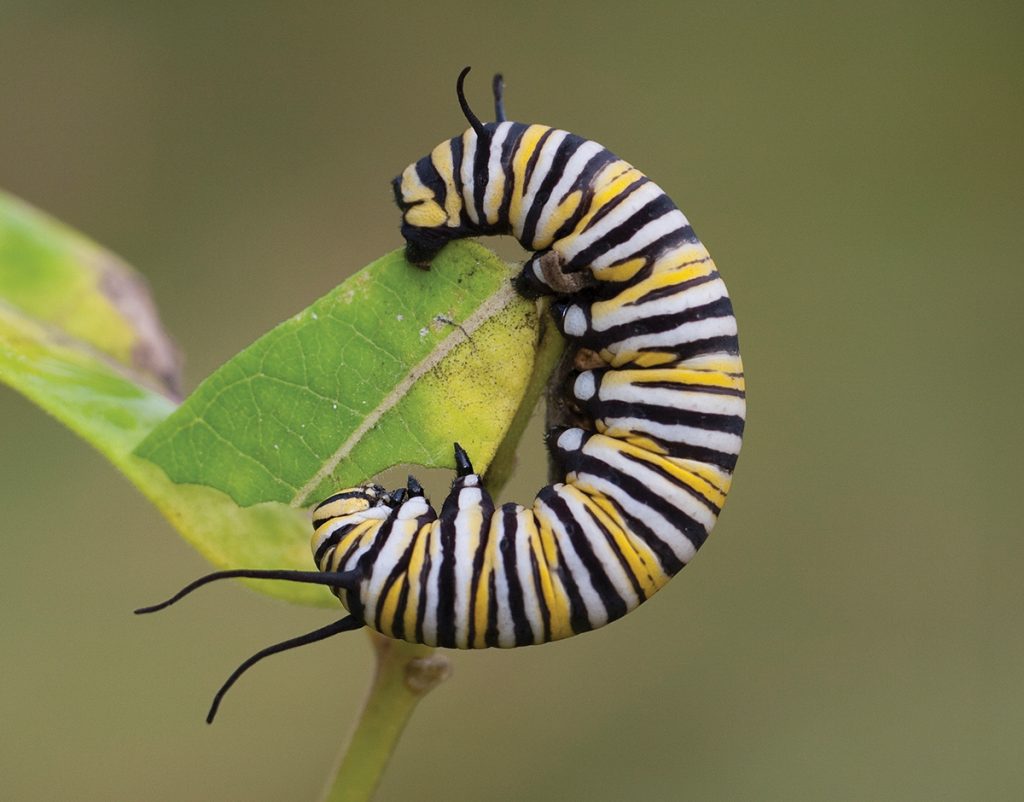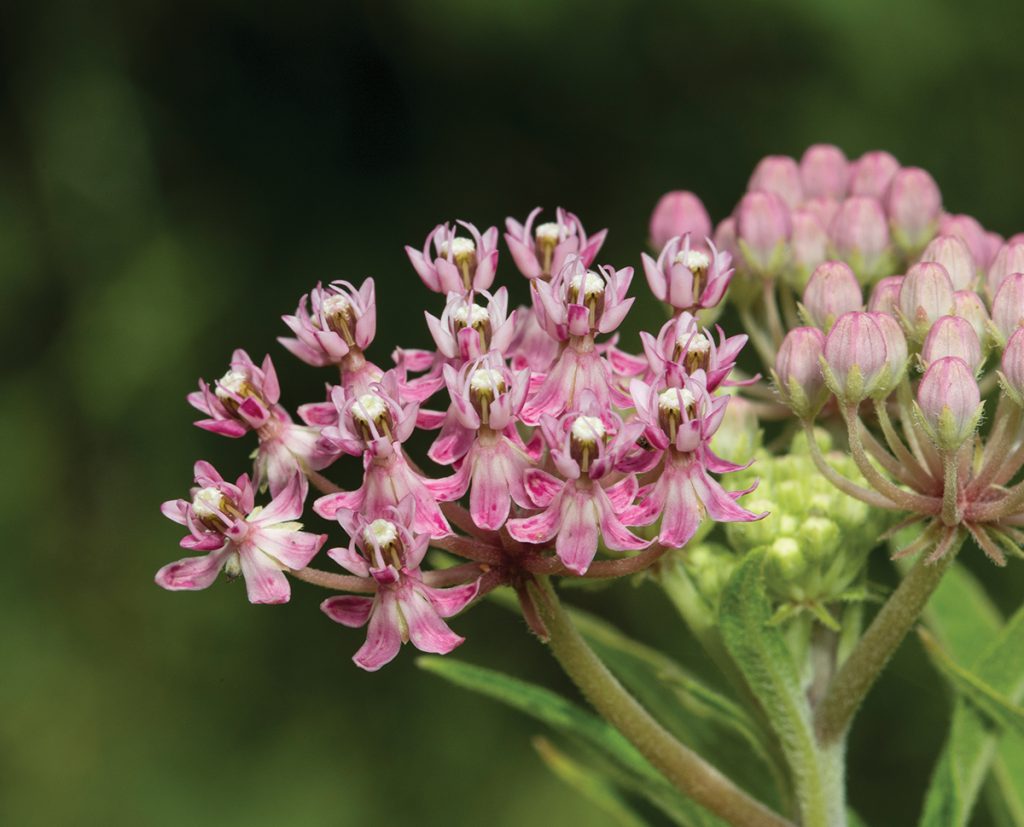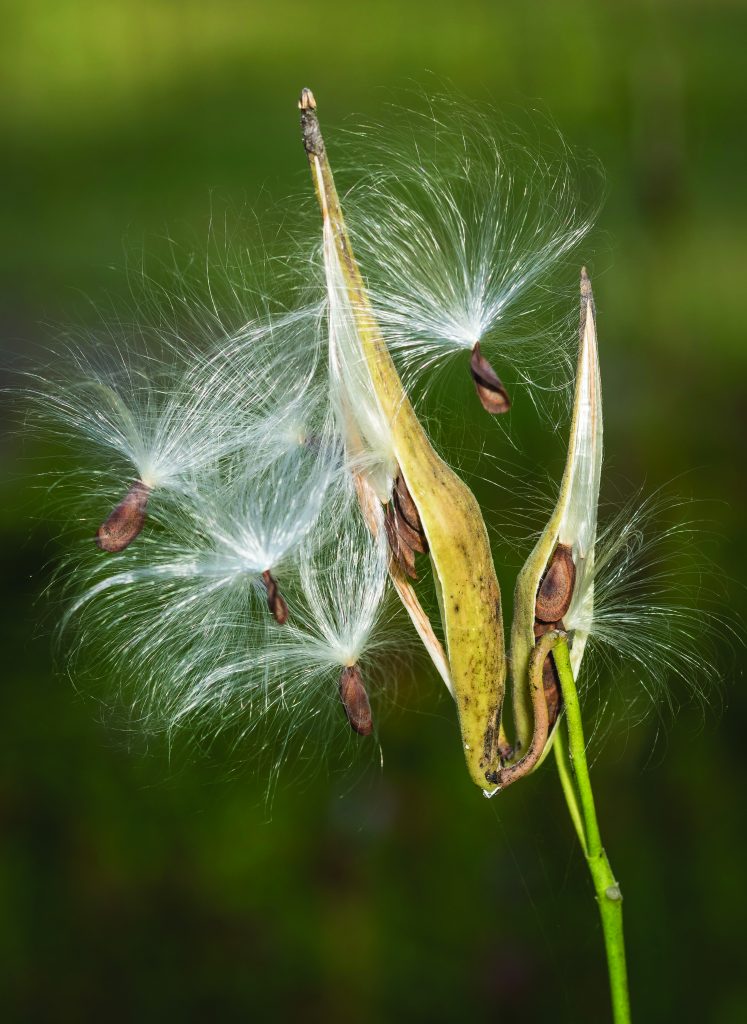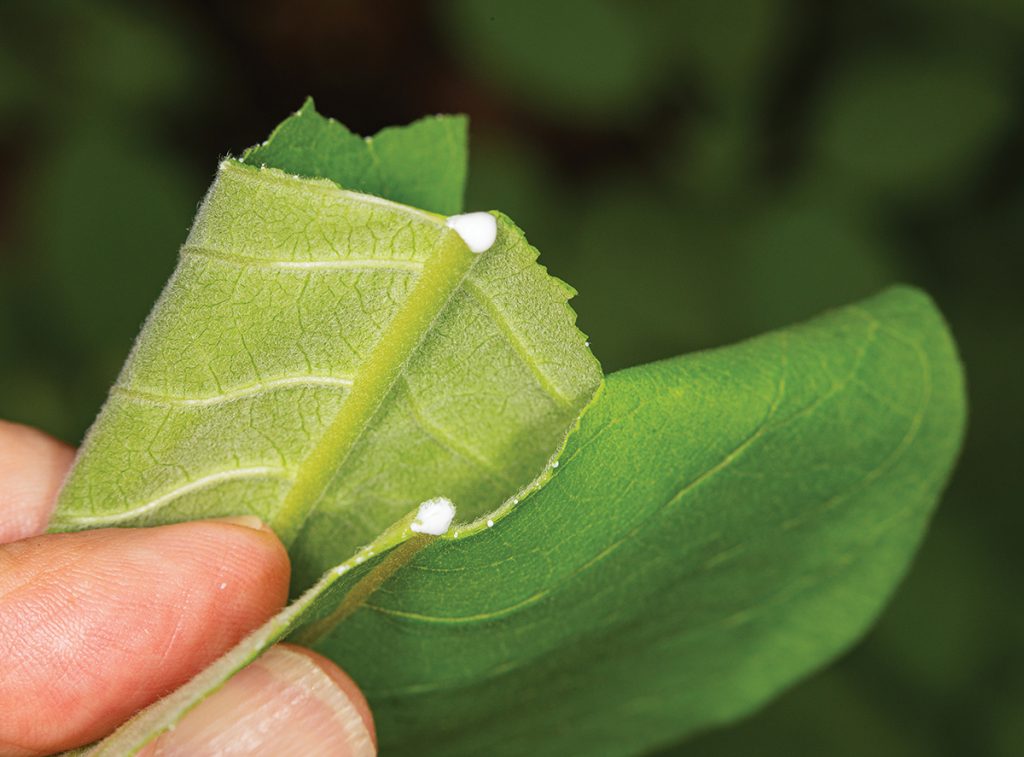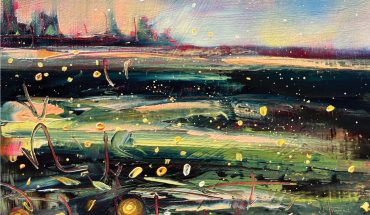Native milkweed, a common pollinator plant in our area, has a unique structure and an important role in our environment.
by Mike Dunn
For a naturalist, an ideal summer day is one filled with wildflowers and butterflies. A group of plants that fits nicely into this idyllic scene are milkweeds. North Carolina has 17 species of native milkweeds that come in a beautiful range of colors, from pink to flame orange. They’re best known as a host plant for the caterpillars of monarch butterflies, which lay eggs on the leaves as they pass through on their migration to and from central Mexico.
But milkweeds are also great pollinator plants, attracting a wide variety of butterflies, native bees and other beneficial insects — and they have some unique characteristics that make them particularly fascinating.
Milkweed flowers typically occur in clusters, with all the flower stalks originating from one location, called an umbel. A close look at an individual milkweed flower shows just how unique it is. Its five petals are curved downward when fully open, which is similar to many other plants.
But within the circle of petals, there are five “hoods” that together look like a crown perched on top of the flower. That structure is aptly named a corona. Each hood contains copious amounts of nectar, beckoning pollinators to the all-important reproductive structure of the plant.
Speaking of reproduction, another unique thing about this plant is its pollen, which, instead of being the familiar powder-like grains, is fused into a sac called a pollinium. Two pollinium sacs are attached together like a saddlebag or wishbone to form a structure called a pollinarium. Still with me? This is where it gets really strange: When an insect visits the flower, its leg may slip down into one of the slits between the flower’s hoods and snag a pollinarium as it pulls its leg out. This is the flower’s goal.
As the insect moves to another flower, the wishbone arms of the pollinarium dry out, causing them to rotate, moving the structure into the proper position to be inserted into the receptive parts of the next milkweed flower. When that insect lands on another flower and its leg goes into a slit just right, the saddlebag breaks apart and deposits the pollen bags. As I’ve spent time watching pollinators like bumblebees on milkweed flowers, I’ve been able to observe these amber-colored saddlebags on its legs.
If this all seems like a lot of effort on the part of both the flower and the pollinator, you may be right. Only a few flowers in each umbel will actually get pollinated and develop into mature seed pods. The seed pods vary in size and shape between the species, but all split along one side when they mature to release the seeds.
The seeds have fluffy white tufts of “hairs” (called comas) which help the seeds disperse in the wind. Many milkweeds also reproduce asexually through rhizomes (underground stems that produce new shoots), which seems like a good idea for a species that has such a complicated pollination process.
The name “milkweed” is derived from the milky sap that most species of this group contain in their leaves and stem, combined with the belief that certain species have been considered “weedy” in pastures and other managed landscapes. But many species of milkweed have also been prized for their practical value. One of the most interesting uses I’ve read about is that silky fibers attached to the seeds were used to fill life vests during WWII.
Due to the many medicinal uses of this group of plants, all of our milkweed species are in the genus Asclepias, which is from the Greek name Asclepios, who was the god of healing. But be aware that all parts of these plants contain toxins like cardiac glycosides that can make you sick, or worse, if carelessly used.
The namesake milky sap of most species is best seen in a broken stem or torn leaf as it oozes out. It is a latex that starts to coagulate when exposed to air, acting as a defense mechanism. The sap can help protect the plant from chewing insects by clogging their mouthparts or making it difficult to move once the plant surface is punctured.
The toxins contained in the plant discourage most herbivorous insects and mammals from feeding upon it. However, there are a few insects that can successfully dine on milkweed plants and a host of other invertebrates that make up the community of creatures you often find on milkweeds.
The insects that have adapted to feed on milkweed can store the plant’s toxins in their bodies so that they themselves are not palatable to predators. The best-known example of this is the Monarch butterfly: both the caterpillars and adults store the toxin, so they’re distasteful to birds and can actually make them sick.
Birds learn to leave them alone. Adult monarchs have distinctive orange-and-black warning coloration, as do many of the other species that feed on milkweed. In addition to the monarchs, here are a couple of the other species with these warning colors you may see on milkweeds.
The Milkweed Longhorn Beetles feed on leaves and stems of Common Milkweed as adults. They lay eggs at the base of the stem and the larvae bore into the stems and roots to feed. They are also known as four-eyed beetles, since their compound eyes are each divided into two parts by a groove for the antenna.
The Small Milkweed Bug (with a black X on its back) and the Large Milkweed Bug (with a black band across its back) primarily feed on the seeds of milkweed. Nymphs and adults often form clusters on milkweed pods, which probably enhances the deterrence of their warning colors. They feed by using their needle-like beaks to pierce the milkweed pods and suck juices from the developing and mature seeds.
Clusters of tiny orange-yellow blobs along the stems are Oleander (or Milkweed) Aphids. This introduced species has naturalized in the United States and feeds extensively on Common Milkweed. Interestingly, they are entirely parthenogenetic, with no known males in the population. They are sometimes tended (and further protected from predators) by ants to collect a sugary fluid known as honeydew that’s excreted by the aphids as they feed.
Look closely at a milkweed plant and you may also see all sorts of predators, parasitoids and other invertebrates coming to feed on the plant, the nectar-rich flowers or on each other.
While the name may have “weed” in it, these plants can be a great addition to any home landscape. Three of the more common species available in area nurseries are Common Milkweed (Asclepias syriaca), Swamp Milkweed (A. incarnata) and Butterflyweed (A. tuberosa). I have all three in a sunny area near our house.
I fell in love with Common Milkweed while doing monarch larva monitoring for a citizen science project at the North Carolina Museum of Natural Science’s Prairie Ridge Ecostation years ago. Common Milkweed grows in dense stands of tall plants whose flowers have an incredibly sweet fragrance.
It is a magnet for all sorts of pollinators and other critters and a favorite host plant of Monarch butterflies. I was warned that it likes to spread if you plant it in your yard, and that has turned out to be very true. But it is easy to pull up wayward plants, and I find its beauty and wildlife value worth the effort.
Swamp Milkweed is a more delicate species that prefers to have wet feet, although it can thrive in a sunny spot with normal garden soil. It tends to be better behaved than its larger cousin and does not spread as much. The flowers are a beautiful light pink in color. The stem fibers are very strong and were used by many Native American tribes for cordage. Several bird species, such as Yellow Warblers, peel these fibers to use in nest construction.
Butterflyweed is one of my favorite wildflowers. It is hardy, drought tolerant and blooms for a long time, adding a bright splash of color to any garden. The typical form has bright orange flowers, but varieties can also range from red to yellow-orange. It grows in a more compact mound-shaped form to a height of 1 to 2 feet. Unlike most milkweeds, it does not have milky sap, but still contains the cardiac glycosides that make it unpalatable to most animals.
I hope you can find space in your home landscape to plant a few of these wonderful native plants. The migrating Monarch butterflies (as well as a host of other insects) will thank you.
This article originally appeared in the July 2024 issue of WALTER magazine.

